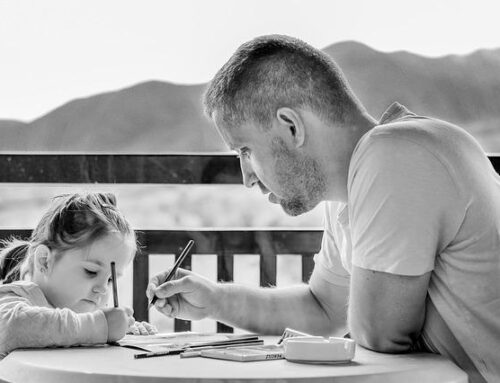I like to define addiction as anything that you don’t seem to have control over. A thought, behavior, feeling, etc. Something that seems to control you. This is more than just a habit. Something that you seem compelled to do. Even after feeling remorseful immediately after doing whatever it is that you did, you still do it again in the future. This makes any changes that you want to attempt frustrating because they don’t last long. This experience of addiction is also one of the reasons that gym memberships increase right after New Year’s Day, but then trail off two to three months later. That’s great news if your waiting for your favorite treadmill to finally be free but upsetting if you are the one struggling to maintain your gym attendance.
There is a reason for all of this. If you are patient enough to read through this full article, then buckle up, this is going to get deep very quickly. Before I begin, I need to normalize this whole process first. This happens to all of us. Not just you, I also include myself in this experience. To self-disclose for a moment, I am trying to reduce the amount of sugar I consume. You might be thinking that my addiction to sugar is purely a physical one. But as you keep reading, I will explain that the body IS the mind, and the brain and body are in constant communication. Therefore, any change that is to be made needs to include the management of your mental health as well.
Since neurochemicals follow the same pathways as opiates, it is easier to see that an addiction can become created by thought alone. It is estimated that you have 60,000 to 80,000 thoughts per day. Every time we have a thought, there is a corresponding emotional state. That emotional state leads to a physiological experience. That feeling then leads to a behavior. That behavior may also lead to the release of the neurochemical dopamine, the reward chemical in the brain, thus rounding out the cycle.
Since we all experience anxiety, let me use that process as an example. Let’s say it’s Sunday afternoon, and you begin to think about work the next day. You have to go into a job that you are not happy with or meet with a boss you don’t particularly care for. You start to feel stressed. That stress is noted in muscle tension and irritability. Maybe you start to develop a headache, or your neck starts to hurt. The irritability that you also feel may end up being directed toward a family member or a pet. But this isn’t an isolated incident. There is pattern forming, and it can be seen in other areas of your life. Anxiety, stress, and anger seem to play themselves out regularly. Maybe you don’t notice it, but people close to you do, and begin to point it out.
It all started with a thought. That thought led to a feeling of anxiety. That feeling led to more thoughts, which then led to more feelings. That cycle continued until you began to declare an identity; “I am anxious.” That tiny thought ultimately led to the creation of adrenaline and cortisol. These hormones passed through your blood stream to the rest of your body. The cells of your body began to configure their cellular membranes to receive the messages of adrenaline and cortisol. Those hormones make you to feel the anxiety physically. If this process continues on a regular basis, your cellular structure is being conditioned and primed for the reception of adrenaline and cortisol.
This cellular conditioning process is part of the creation of an unconscious experience of your life. By age 35, 95% of your daily experience is unconscious. That means that you are unaware of 95% of how you respond to your day. Perfect examples of this in action include you driving your car, brushing your teeth, showering, and eating. You also respond to people in your life in a very rehearsed predictable way as well, especially when you have needs that aren’t being met such as sleep or if you’re hungry.
This 95% is where the body is the mind. Where you feel physical sensations of anxiety without being aware of any conscious level anxious thinking. The more you think an anxious thought, the more adrenaline and cortisol get put into your blood, leading to a conditioning of your cellular membranes to be primed to receive the messages of those hormones. The more anxiety you feel, the more thoughts you have. That process, when practiced on a regular basis, is now habitual and unconscious. The physical dependency of an addiction can now be seen. Now you don’t have to have a conscious level thought to experience the physical effects of anxiety. Your body is now creating the sensation of anxiety in order to trigger a conscious anxious thought, leading to the production of more adrenaline and cortisol. BOOM! Now your body is not back to its state of familiarity. So, when someone asks why you are anxious, your answer most likely be that you don’t know.
Many people who find themselves waking up early in the morning and not being able to go back to sleep are experiencing what we are talking about. The body starts to get lulled into a state of calm. A state that is now unfamiliar. Calm does not compute. In order to restore the body to its now “normal” state, it creates an anxious sensation, thus waking you up. Then your mind is off to the races. This can also be the culprit of a panic attack. There are other potential triggers of panic attacks that may be in a future post, however. But if your relaxing to Bobby McFerrin’s “Don’t Worry be Happy,” and you start to experience the symptoms of panic, this unconscious process may be the cause. Or, maybe you just don’t like that song. I’m not judging, I don’t like it either.
Attempting to break the chains of events that led you to this addiction leads to detox, and the unconscious efforts at sabotage. When you start to change things in your process, you may effectively begin depriving your cellular structure of the adrenalin and cortisol that it is primed to receive. To put it simply, your body is going through withdrawal. What happens when an addicted person starts to experience withdrawal? That’s right, the person starts to look for ways to get what they believe that need. Relapse happens. This is not a sign of weakness; this is a sign of the strength that the body (unconscious mind) has when it comes to your mental health. Please be careful, the detox process can be a struggle that may lead to self judgement.
I remember when I went on vacation with a friend. We went to Florida, and the only agenda item we had was to hang out in the pool and eat paninis from the pool bar. It was a beautiful weekend. Relaxation is a wonderful idea, and in theory it would be for me. But when it was put into practice, I struggled. “Hey, let’s go to the store and get a coffee,” I would suggest. I was met with, “No. We’re not doing anything but hanging out in the pool.” I would then say, “I’m going to go for a run.” I was then met with a bit of annoyance from my friend and myself. Relaxation was a great concept, but I had a really hard time practicing it. The reason is discussed in this post. My body is configured for stress and always being on the move.
When you find yourself trying to relax, not something your body may be used to, your body starts to talk to your brain (withdrawal). Subvocalizations start to occur and your motivation lessens. “But you have so much to do, you can relax later.” “If you get it done now, then you don’t have to worry about it.” “Something doesn’t feel right.” Well, that last one is correct, relaxing is not your “normal,” so it doesn’t feel right. If you have joined the gym to begin a new habit for the year, your internal voice may echo the thought of going tomorrow because you are too tired today. You begin to throw obstacles in your path that will derail your resolution to be healthier. If you’re like me, and you’re reducing your sugar intake, your thoughts may be, “It’s only just one cookie!” Or you’ll subconsciously add one more teaspoon of sugar to your coffee. Your body just added that extra spoonful of sugar without your conscious approval, upending your efforts in reducing your intake. Don’t lie to yourself, it wasn’t to help the medicine go down, Mary Poppins. It’s a rehearsed behavior, so it is very hard to stop.
In order to work on relapse prevention and begin to gain momentum in your desired change in life, here are a few steps that you can put into practice:
- Declare your reasons for change. These reasons can be used in your relapse prevention plan to help you remain on track and to consciously remind you of the purpose that you are trying to change unconscious processes.
- Become aware of yourself. Practicing awareness of your behavior and thinking is the start to being able to change anything in your life. Awareness needs to occur before you can change anything.
- Identify what your triggers are. These can be anything from situations, dates and times of events (past or present), feelings, people, or places. Your brain is associative, meaning it associates meaning to certain thoughts, feelings, and behaviors to various places in your life. I you want to eat healthier; you may be triggered into unhealthy choices if you go to Friendly’s with your family for dinner. Another example is when it is time for lunch. You may not have been hungry 10 minutes ago, but when you look at the clock and see that it is the time when you usually eat lunch, your stomach may start to growl. You’re not technically hungry, you are just conditioned to eat at that time of day.
- When you are aware of your triggers, create strategies to help navigate through times of being triggered.
- Understand the biology that is connected to your thinking process. Through understanding and acceptance, judgement lessens.
- Give yourself options. Choose to do things differently as opposed to commanding yourself to do things differently. There is a higher chance of taking the healthier when you provide yourself with choices and remind yourself as to the reasons for the desired change in your life.
- I suggest reading, “There’s a Hole in My Sidewalk,” by Portia Nelson.
- Contact a therapist at The Center for Trauma, Stress, and Anxiety, LLC to help you work through any addictive processes that you may be having trouble with. Call (443) 567-7037.





Leave A Comment